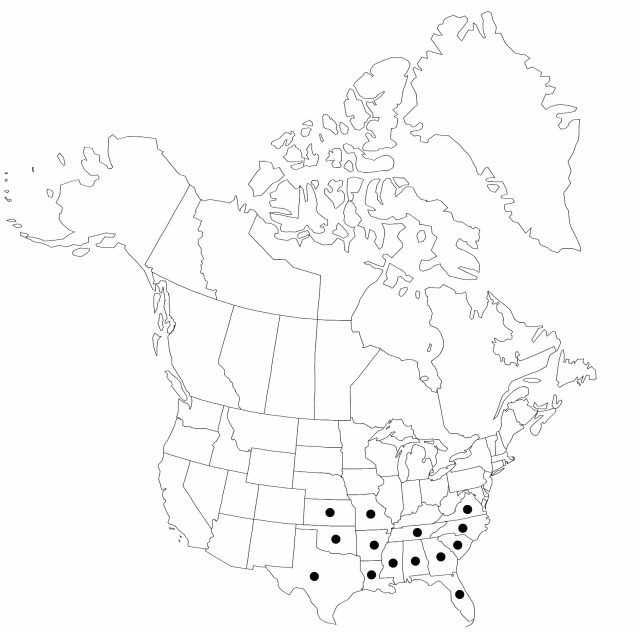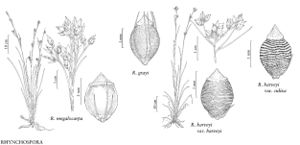Rhynchospora harveyi var. harveyi
Plants perennial, cespitose, 70–110 cm. Culms erect to excurved, slender, often stiffish. Inflorescences: spikelet clusters mostly dense, branches spreading to erect, stiffish; subtending leafy bracts and bractlets, mostly exceeding clusters. Spikelets prevalently ovoid to broadly ellipsoid, 3–4 mm, apex acute; fertile scales broadly ovate to obovate or suborbiculate, sometimes cupulate, 2.5–3.5 mm, apex acute to rounded or emarginate, often mucronate. Flowers: perianth bristles 6, reaching at most to fruit midbody. Fruits 1(–2) per spikelet, 2–2.4 mm; body usually deep brown, lustrous, tumidly obovoid to suborbicular, 1.5–1.7 mm, with many fine, undulate lines of minute, isodiametric to short-rectangular pits or very finely reticulate, appearing nearly smooth; tubercle distinctly buttressed, lowconic 0.3–0.5(–0.7) mm.
Phenology: Fruiting spring–summer.
Habitat: Sands or sandy clays in open areas in pinelands, flatwoods, savannas, and prairies, often in dry or seasonally dry places
Elevation: 0–400 m
Distribution

Ala., Ark., Fla., Ga., Kans., La., Miss., Mo., N.C., Okla., S.C., Tenn., Tex., Va.
Discussion
Selected References
None.
